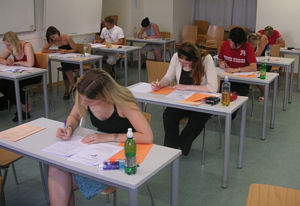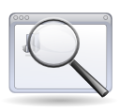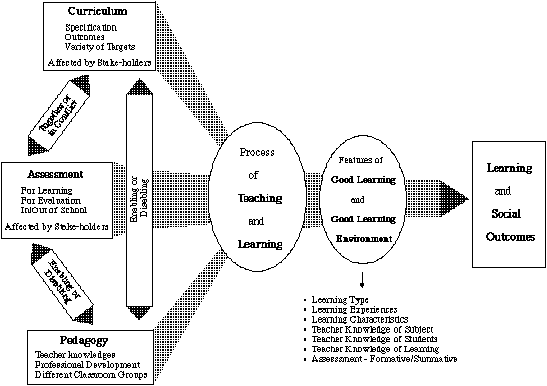MOSEP Module 4/session1
 |
MOSEP ePortfolio Tutorial: Module 4 Assessment of ePortfolios |
Overview / Introduction - Module 4 Session 1 | Session 2 | Session 3 | Session 4 |
Contents
|
After this session the participant will:
|
Different purposes of assessment and its influence on learning
According to Carr et al. (2006) assessment of students can be for several purposes, namely:
- to give feedback to students about their learning and progress.
- to give feedback to teachers about the effectiveness of their teaching and curriculum planning.
- to report on student learning and progress to parents, caregivers and the school management.
- for the award of national qualifications and accreditation of individuals and institutions.
- to evaluate the education system, through public accountability of institutions and teachers.
Assessment for all the above purposes has the potential to intervene (either positively or negatively) in learning, pedagogy and the curriculum.
(Source: Malcolm Carr, Clive McGee, Alister Jones, Elizabeth McKinley, Beverley Bell, Hugh Barr and Tina Simpson (2006). The Effects of Curricula and Assessment on Pedagogical Approaches and on Educational Outcomes. URL: http://www.minedu.govt.nz/index.cfm?id=5610)
The items and form of assessment influence the learning processes as a "hidden curriculum": Assessment affects the environment in which the process of teaching and learning occurs.
To concrete this: the portfolio method will probably not work, if the students will be formative or summative assessed with an multiple-choice test as the only base for grading.
 Students sitting a final exam at the University of Vienna. (Source: http://commons.wikimedia.org/wiki/Image:Test_%28student_assessment%29.jpeg, released under Public Domain)
|
Different forms and its influence for the learning process
As forms of assessment can distinguish:
- self assessment, peer assessment, group assessment, teacher assessment
- quantitative (testing or counting) and qualitative assessment
- different forms of feedback (grading, comment)
Assessment of learning and for learning
Assessment always influences the learning process, wheter it is "for" or "of" learning´: The assessment of learning seeks to discover how much have students learned as of a particular point in time. Assessment for learning asks how can we use assessment to help students learn more (see Rick Stiggins 2004).
The Assessment Reform Group (2002) defines assessment for learning as “the process of seeking and interpreting evidence for use by learners and their teachers to decide where the learners are in their learning, where they need to go and how best to get there.”
Assessment of learning is:
- “Purpose prescribed
- Artifacts mandated - scoring for external use
- Organized by teacher
- Summative (past to present)
- Institution-centered
- Requires extrinsic motivation”
In contrast assessment for learning is:
- “Purpose negotiated
- Artifacts chosen - feedback to learner
- Organized by learner
- Formative (present to future)
- Student-centered
- intrinsically motivating”
How should you think that your e-portfolio should be assessed? You will find more information about learning goals and assessment criteria in the following modules, but as a first step we ask you for a brainstorming:
|
Characteristics of assessment of learning with e-portfolios
For a better illustration, how assessment of e-portfolios is to be characterized, we contrast it with e-testing as another form of e-assessment. Online-testing, is a form of testing, which is performed on a computer and is provided via a computer network. The answers (e.g. in a multiple choice test) are assessed by a computer, too (according to Hornung-Prähauser, Veronika / Geser, Guntram / Hilzensauer, Wolf / Schaffert, Sandra (2007): Didaktische, organisatorische und technologische Grundlagen von E-Portfolios und Analyse internationaler Beispiele und Erfahrungen mit E-Portfolio-Implementierungen an Hochschulen. Salzburg. URL: http://edumedia.salzburgresearch.at/images/stories/e-portfolio_studie_srfg_fnma.pdf.)
Assessment of e-portfolios is intricate for the candidate: It takes a lot of time to prepare the assessment, because the assessment involves the whole learning phase. In contrast to well developed online-testing (which is normally used for high numbers of candidates), it takes less time for the examiner to prepare and to arrange the e-assessment of an e-portfolio (which is normally used for small number of candidates). Nevertheless, the effort for the examiner is high.
Whereas the assessment of an e-portfolio looks at a “presentation portfolio” or at a candidate’s presentation of an e-portfolio, e-testing allows online multiple choice testing, online exercises or computer based simulations (e.g. flight simulator). In a consequence, the assessed materials and the assessment criteria are different: Everything that documents a personal learning process could be used as an assessable artifact, e. g. a homework (including its correction), a learning diary or a group work result. The assessment of e-portfolios takes more diverse materials into account: learning and studying goals, learning plans, artefacts (materials, certificates), reflections about learning, layout and content in an “overall view”, the presentation and feedback from others. In addition, the presentation of the presentational portfolio can be assessed, too.
An e-test evaluates the correctness (similarity to example solution) and the completeness of answers (e.g. multiple choice answers, drag and drop). The criterion for the assessment of an e-portfolio is its fulfilment; it focuses on competencies and it should follow individual orientation (“subjective” criteria). As mentioned above, in the practice of assessment of learning with e-portfolios most of the time class-wide goals and criteria, sometimes even “objective” criteria are applied.
Whereas the rating and evaluation of the materials is quick and objective with online-tests, it is intricate and subjective with e-portfolios. Last not least the candidate’s behaviour in the assessment can be characterized as passive interrogation of knowledge for e-testing but as active and self-reflective within the e-portfolio work.
With these exaggerated comparison of these two forms of e-assessment shows clearly that assessment of portfolio can enable a more holistic, individual, learning supportive assessment: “From the viewpoint of assessment, the rationale for portfolios is clear: there are a number of valuable activities and attainments that cannot be assessed using the format of timed tests” (McCusker, Pead & Ridgway, 2006 Report 10: Literature Review of e-asessement. Bristol: Future Lab.).
| Read this carefully and discuss, if there are other important points you see for assessment with eportfolios! You can also use other sources, e.g. [1]
|

